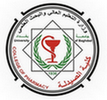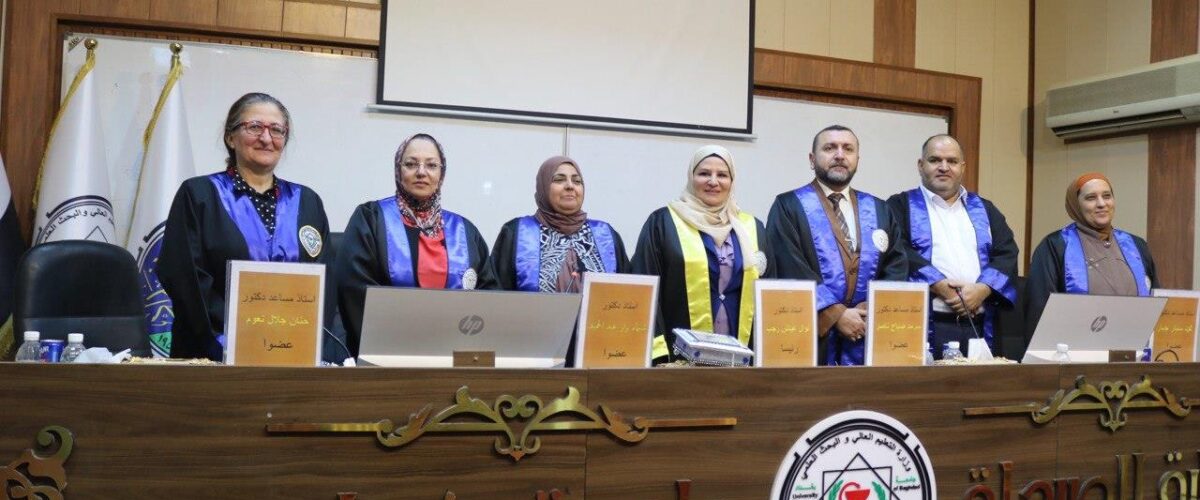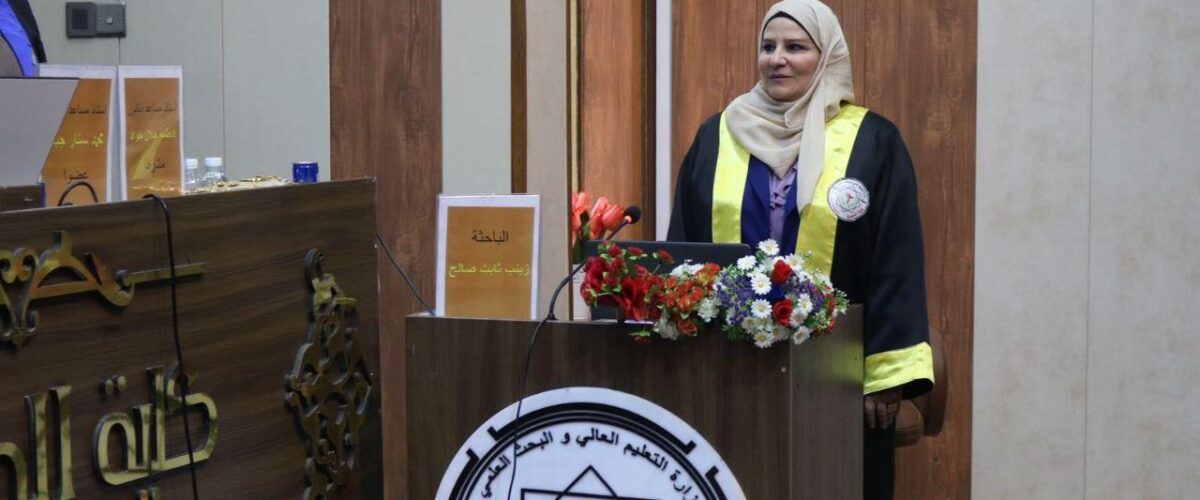The Faculty of Pharmacy discussed the Ph.D. dissertation entitled “Preparation and Characterization of Ganciclovir as Nanostructure Lipid Carrier for Ophthalmic Dosage Form “ by Zainab Thabit Salih and her supervisor, Assist. Prof. Dr.Fatima Jalal Jawad, in the Department of Pharmaceutics. The dissertation aimed to measure the preparation and characterization of a ganciclovir-loaded nanostructured lipid carrier for ophthalmic use as an eye drop to be used in the treatment of viral disease, to improve permeability, penetration, and the residence time with ocular tissue, diminish irritation in the corneal tissue, and increase patient compliance. Thirty-one formulas were prepared using multiple techniques, with emulsification or ultrasonication with saturation being the most appropriate method. The physical properties, morphological properties, and factors affecting the prepared lipid nanoparticles were studied. Also, the effect of liquid lipid, solid lipid, surfactant, and co-surfactant and their percentages on the particle size and entrapment efficiency were studied for all formulas, and the formula with the highest entrapment, lowest particle size, and highest cumulative amount of drug released was chosen as an optimum formula for the addition of HPMCE5. To describe the status of ganciclovir and lipid modification in the solid-state, differential scanning calorimetry, Fourier transform infrared spectroscopy, and powder X-ray diffraction were done. Scanning electron microscopy and transmission electron microscopy were used to analyze particle form and surface morphology. After several tests, the optimized formula (FM3) was obtained, containing ganciclovir (0.15%), palmitic acid (3.6%), Oleic acid (2.4%), Cremophor EL (2% w/w), Transcutol HP (1.0% w/w), and HPMCE5 (2%w/v). The mean particle size, polydispersity index, zeta potential, and entrapment efficiency were found to be (132.9±1.2nm), (0.182±0.2), (-11.45±0.8mV), and (74±0.5%) respectively. The outcome of an ex-vivo permeation study comparing formulas F12 and FM3, with the marketed drug product revealed a significant increase in drug permeation from the lipid-based bioadhesive nanostructured lipid carrier formulation (P < 0.05) for both F12 and FM3, with about a three-and-a-half-fold increment in the apparent permeability coefficient. Moreover, the safety study demonstrates that the prepared FM3 is free from any suspected potential harmful effects on the tissue of the eye.In conclusion, nanostructured lipid carriers might be a potential delivery approach for improving the ocular administration of ganciclovir.




